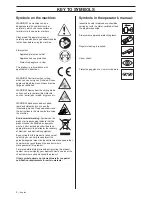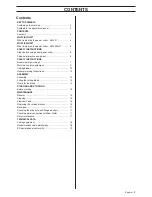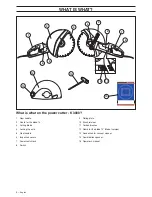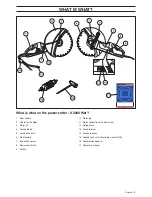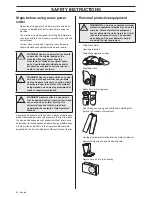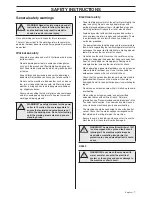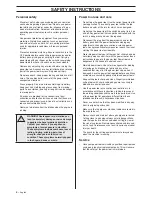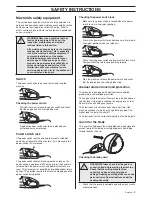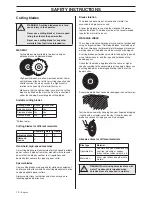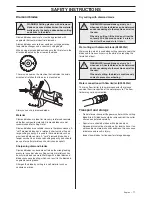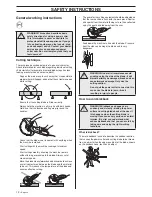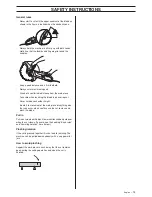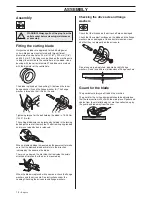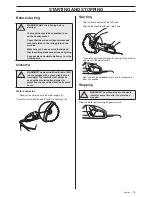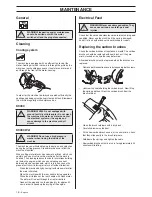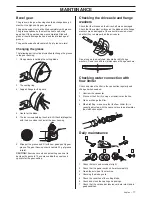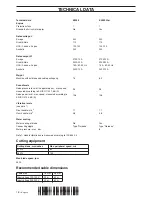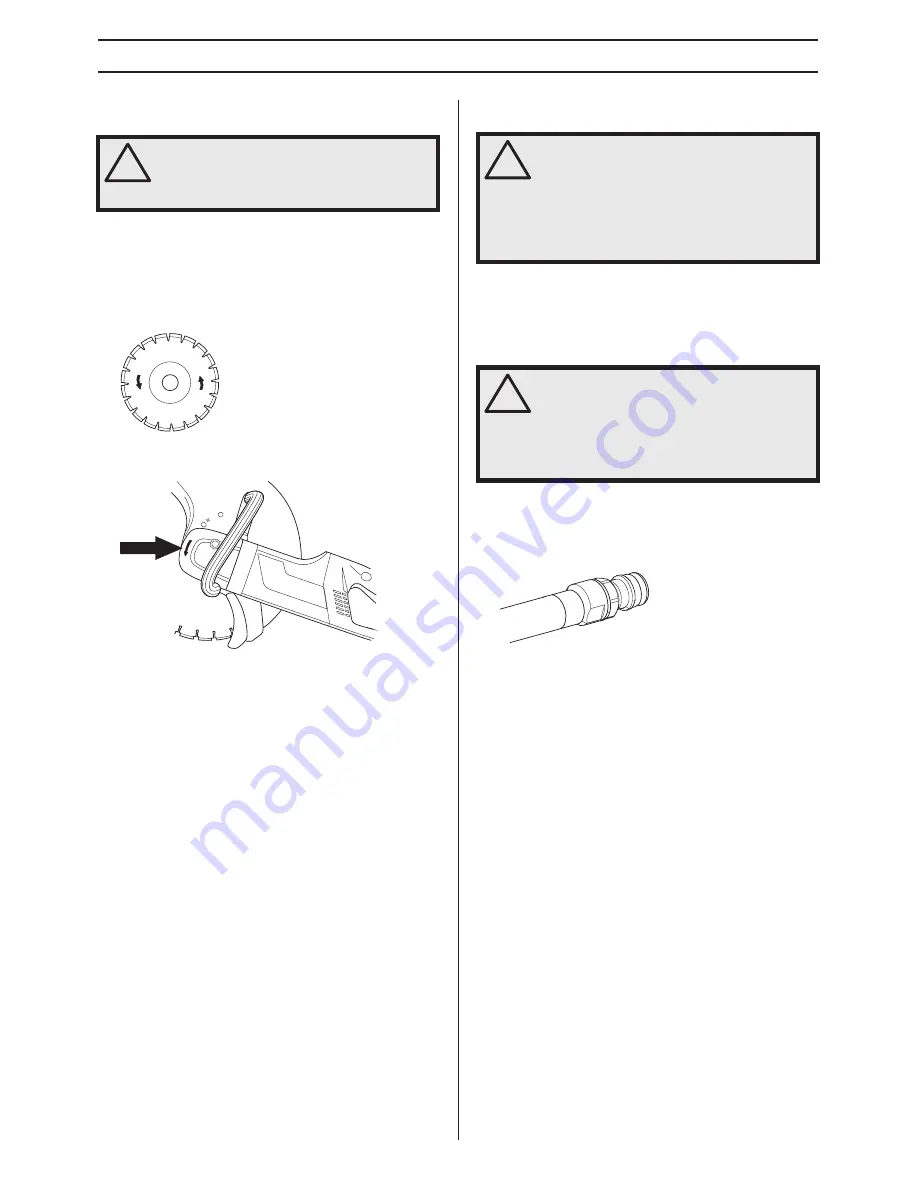
English
– 11
SAFETY INSTRUCTIONS
Diamond blades
Diamond blades consist of a steel body provided with
segments that contain industrial diamonds.
Diamond blades ensure lower costs per cutting operation,
fewer blade changes and a constant cutting depth.
When using diamond blades make sure that it rotates in the
direction indicated by the arrow on the blade.
There is an arrow on the machine that indicates the axleís
direction of rotation that the disc is mounted on.
Always use a sharp diamond blade.
Material
Diamond blades are ideal for masonry, reinforced concrete
and other composite materials. Diamond blades are not
recommended for cutting metal.
Diamond blades are available in several hardness classes. A
"soft" diamond blade has a relatively short service life and
large cutting capacity. It is used for hard materials such as
granite and hard concrete. A "hard" diamond blade has a
longer service life and reduced cutting capacity, and should
be used for soft materials such as brick and asphalt.
Sharpening diamond blades
Diamond blades can become dull when the wrong feeding
pressure is used or when cutting certain materials such as
heavily reinforced concrete. Working with a blunt diamond
blade causes overheating, which can result in the diamond
segments coming loose.
Sharpen the blade by cutting in a soft material such as
sandstone or brick.
Dry cutting with diamond blade
Wet cutting with diamond blade (K3000 Wet)
Water cooling, which is used when cutting concrete, cools the
blade and increases its service life while also reducing the
formation of dust.
Water connection with flow limiter (K3000 Wet)
There is a flow limiter in the water connector that gives a
constant flow, irrespective of the water pressure. The flow
limiter may not be dismantled.
Transport and storage
•
Do not store or transport the power cutter with the cutting
blade fitted. All blades should be removed from the cutter
after use and stored carefully.
•
Special care should be taken with abrasive discs.
Abrasive discs must be stored on a flat, level surface. If an
abrasive disc is stored in humid conditions, this can cause
imbalance and result in injury.
•
Inspect new blades for transport or storage damage.
!
WARNING! Cutting plastics with a diamond
blade can cause kickback when the material
melts due to the heat produced when cutting
and sticks to the blade.
!
WARNING! Diamond blades get very hot
when used. A heated blade can be deformed
and cause damage to the machine as well as
the user.
When dry cutting, lift the blade out from the
cut every 30–60 seconds and let it rotate in
the air for 10 seconds to let it cool.
!
WARNING! Diamond blades get very hot
when used. A heated blade can be deformed
and cause damage to the machine as well as
the user.
When wet cutting, the blade is continuously
cooled to prevent overheating.


